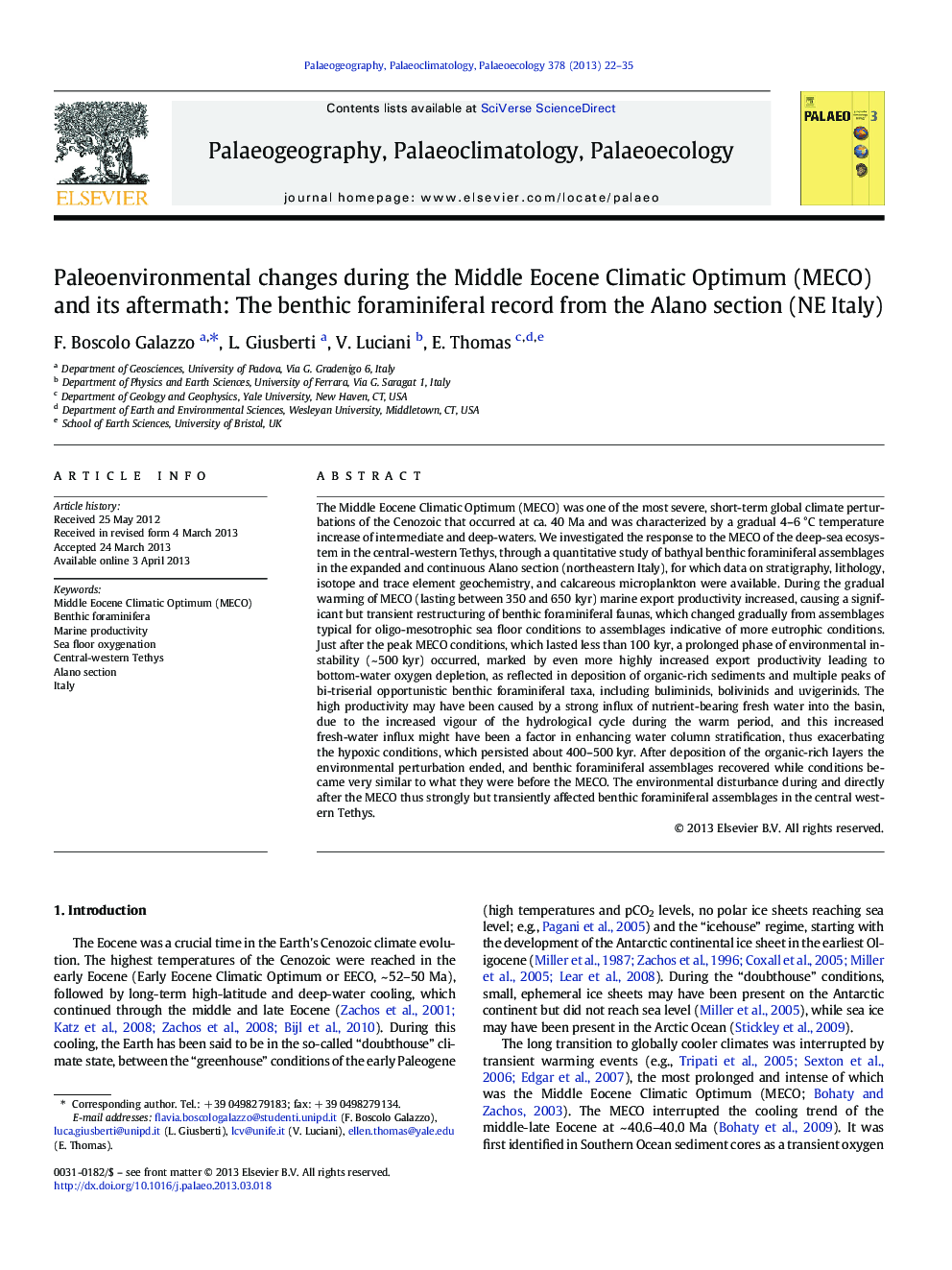| کد مقاله | کد نشریه | سال انتشار | مقاله انگلیسی | نسخه تمام متن |
|---|---|---|---|---|
| 4466559 | 1622208 | 2013 | 14 صفحه PDF | دانلود رایگان |

• We studied benthic foraminifera from a Tethyan section spanning the MECO.
• Benthic foraminifera reflect paleoenvironmental changes across the MECO.
• Foraminiferal changes suggest variations in productivity and sea-floor oxygenation.
• Sea-floor eutrophication and oxygen depletion follow the MECO peak warming.
• No permanent effects on benthic foraminifera have been detected.
The Middle Eocene Climatic Optimum (MECO) was one of the most severe, short-term global climate perturbations of the Cenozoic that occurred at ca. 40 Ma and was characterized by a gradual 4–6 °C temperature increase of intermediate and deep-waters. We investigated the response to the MECO of the deep-sea ecosystem in the central-western Tethys, through a quantitative study of bathyal benthic foraminiferal assemblages in the expanded and continuous Alano section (northeastern Italy), for which data on stratigraphy, lithology, isotope and trace element geochemistry, and calcareous microplankton were available. During the gradual warming of MECO (lasting between 350 and 650 kyr) marine export productivity increased, causing a significant but transient restructuring of benthic foraminiferal faunas, which changed gradually from assemblages typical for oligo-mesotrophic sea floor conditions to assemblages indicative of more eutrophic conditions. Just after the peak MECO conditions, which lasted less than 100 kyr, a prolonged phase of environmental instability (~ 500 kyr) occurred, marked by even more highly increased export productivity leading to bottom-water oxygen depletion, as reflected in deposition of organic-rich sediments and multiple peaks of bi-triserial opportunistic benthic foraminiferal taxa, including buliminids, bolivinids and uvigerinids. The high productivity may have been caused by a strong influx of nutrient-bearing fresh water into the basin, due to the increased vigour of the hydrological cycle during the warm period, and this increased fresh-water influx might have been a factor in enhancing water column stratification, thus exacerbating the hypoxic conditions, which persisted about 400–500 kyr. After deposition of the organic-rich layers the environmental perturbation ended, and benthic foraminiferal assemblages recovered while conditions became very similar to what they were before the MECO. The environmental disturbance during and directly after the MECO thus strongly but transiently affected benthic foraminiferal assemblages in the central western Tethys.
Journal: Palaeogeography, Palaeoclimatology, Palaeoecology - Volume 378, 15 May 2013, Pages 22–35